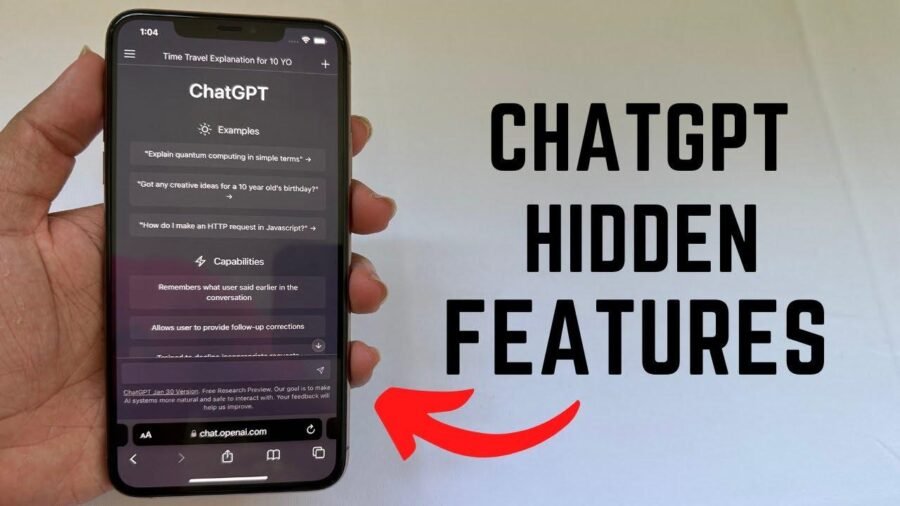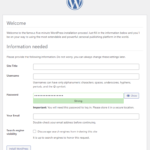Click here to buy secure, speedy, and reliable Web hosting, Cloud hosting, Agency hosting, VPS hosting, Website builder, Business email, Reach email marketing at 20% discount from our Gold Partner Hostinger You can also read 12 Top Reasons to Choose Hostinger’s Best Web Hosting
People using ChatGPT today hit the same friction: great outputs, but inconsistent tone, repeated follow-ups, messy data-handling, and privacy worries. That’s the problem. It’s frustrating when a single session can’t remember your brand voice, when data uploads feel clunky, or when you waste hours repeating the same instructions. The agitation is real — lost time, missed opportunities, and outputs that don’t scale. The solution is to stop treating ChatGPT as a single query box and start using its deeper capabilities — the lesser-known features, tools, and workflows that together create reliable, repeatable results. This article shows 11 ChatGPT hidden features, real use cases, and an action plan to combine them for consistent, high-quality AI work.
GPT-5’s launch will likely trigger demand spikes that OpenAI cannot immediately satisfy
Why these “hidden” features matter now
ChatGPT isn’t just a chatbot: it’s a platform of building blocks (custom GPTs, data tools, memory, file handling) you can stack. Most guides list features in isolation; this one teaches feature stacking — how to combine them to solve real problems (e.g., create a monthly report pipeline, or a branded content assistant), plus mini blueprints and prompt templates you can copy.

The 11 ChatGPT hidden features
1. Custom GPTs — build a repeatable specialist
Create a focused assistant (marketing, legal draft reviewer, course editor) with preset instructions, knowledge files, and behavior. Instead of re-prompting each time, you open the GPT and get consistent output aligned to role, tone, and workflow. Use when you need brand-aligned drafts at scale.
Quick use: Upload a 1-page brand guide + three example posts → set reply style to “short, direct, with bullet takeaways” → publish private GPT.
2. Advanced Data Analysis (ADA) — upload spreadsheets and ask for insights
More than a file upload: ADA will parse CSVs, suggest charts, run simple code, and produce reproducible analyses. Great for monthly revenue breakdowns, user cohorts, and A/B test summaries.
Mini-case: Freelancer loads client ad spend CSV → asks “show 3 cost-saving recommendations” → gets a prioritized action list + chart suggestions to include in the client deck.
3. Custom instructions + memory = context that lasts
Custom instructions shape every reply; memory stores persistent user details (preferences, ongoing projects). Use both to avoid re-teaching ChatGPT your style or constraints every session.
Pro tip: Put “Always suggest 3 subject lines for newsletters” in custom instructions and save recipient personas in memory.
4. Tool chaining inside prompts (the “workflow prompt”)
Hidden to many is the power of explicit step-by-step chains in a single prompt: file → analyze → summarize → format. Example:
Step 1: Read attached CSV. Step 2: Give 3 hypotheses. Step 3: Create executive summary (3 bullets) + one slide outline.
This yields structured, actionable outputs that require minimal edits.
5. System prompts baked into GPTs
When you create a GPT you can bake a system-level directive that the assistant follows invisibly — e.g., “Always produce accessibility-friendly headings.” That removes the need to say it each time.
6. Prompt templates with variables
Store replaceable templates inside your GPT or notes: Write a product description for {{product_name}} targeting {{audience}} in {{tone}}. Replace variables per job to speed outputs.
GPT-5 in ChatGPT: What the Slow Rollout Means for Plus, Pro, Team
7. File uploads with multi-format intelligence
ChatGPT can read PDFs, slides, CSVs, and images (OCR + captioning). Combine a PDF product spec and a CSV user test log to produce a concise product road map.
8. Record mode and voice capture
Record meetings or voice notes (where available) and get transcriptions + action items. Amazing for quickly converting meeting audio into assignable tasks and follow-upsopen.
9. Hidden keyboard shortcuts and UI tricks
Power users: keyboard shortcuts, pinning GPTs, and chat export options make workflows faster. (Check your app settings — small UI moves save minutes per task.)
10. Safety and privacy controls (opt-outs and memory management)
Hidden but essential — long-term memory can be edited or cleared. Use memory controls to prevent storing sensitive client data; annotate what should not be remembered.
How to Use ChatGPT to Find the Best Laptop to Buy in 2024: A Smart Buyer’s Guide
11. Feature stacking: build a weekly automation
This is the unique, high-value tactic most coverage misses: stack GPT + ADA + custom instructions + file uploads + memory into an automated weekly report.
Blueprint:
Create a private GPT “Weekly Analyst.”
Upload a template slide deck and the KPI CSV schema.
Set custom instruction: “Use plain language, 3 bullets per insight, and include recommended next steps.”
Each Monday: upload new CSV to a conversation in the GPT + prompt “Produce the weekly dashboard and 1-slide summary.”
Result: consistent, branded deliverable in minutes.
Mastering ChatGPT Deep Research Mode: A Step-by-Step Guide for In-Depth AI-Powered Research
Feature stacking as an organizational pattern
Most tutorials show features individually. The real efficiency arises when teams design modular assistants that cover repeatable tasks (e.g., sales summary assistant, content editor, compliance checker). Think in modules: input (file, audio), processor (ADA, code), style (custom instructions), and execution (output templates, slides, emails). Treat each module as replaceable and testable — you’ll reduce variance and increase reuse.
Real-world mini case study
Client: Boutique e-commerce shop
Goal: Reduce time to create weekly marketing reports from 4 hours to 30 minutes.
Stack used: Custom GPT “Marketing Reporter” + ADA + memory + file uploads.
Outcome: CSV upload → “Generate 3 hypotheses + 2 social captions” → deliverable in 22 minutes. Client reported clearer recommendations, faster turnaround, and reduced back-and-forth with stakeholders.
Security & ethical notes
Never upload PII or full social security numbers. Use hashed or redacted test data.
Use memory controls to remove sensitive details.
Audit outputs when you chain tools — small prompt changes can amplify errors.
If you depend on generated code or legal copy, have a human review.
Create inspirational images from the top AI generators. Simply enter a subject, They’ll apply styles, and you’ll tweak the one you like.
How to get started today — quick action plan
15 min: Create one Custom GPT for a frequent task (e.g., content first draft).
15–30 min: Draft a 1-page brand + style guide and add to the GPT.
15–30 min: Run a sample dataset through Advanced Data Analysis and save the prompt chain that produced the best output.
Ongoing: Save templates as prompt variables and add them to the GPT for instant reuse.
10 Best ChatGPT Prompts for Content Writing
Key Takeaways
Custom GPTs and ADA are game-changers — they turn one-off prompts into repeatable workflows.
Feature stacking (modules for input, processing, style, execution) is the single tactic that multiplies value.
Memory + custom instructions give persistent, brand-safe context and reduce rework.
File uploads + ADA save hours on analysis and reporting.
Safety first: redact sensitive data and audit outputs; memory can be edited or cleared.
Conclusion
ChatGPT hidden features aren’t just novelties — they’re the building blocks for reliable, repeatable AI workflows. Start by making one Custom GPT and layering in file uploads and ADA. Once you see the time you save, you’ll spot dozens of places to apply feature stacking across your business. Want more blueprints? Try creating a “Weekly Analyst” GPT this week and report back on the time saved.
Build your first Custom GPT, try the ADA flow with a real CSV, and subscribe to SmashingApps for more practical blueprints and templates you can copy.
Now loading...






